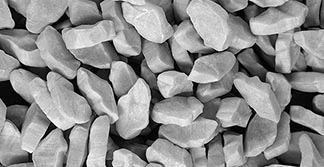In a nutshell, the production of foamed rubber can be compared to baking a cake.
Many ingredients are weighed according to a recipe and mixed intensively. The basic components of the formulations are special synthetic rubbers, in the case of neoprene this is CR rubber. In contrast to other rubber compounds, SEDO recipes contain blowing agents - in the case of cakes it is the yeast - which foam up the mixture in the following production process.
After mixing the recipe components, the mixture is shaped by an extrusion process for further processing.
Finally, the molded ingots are cured (vulcanized) - the individual molecules of the base rubber are irreversibly bonded together and retain their elastic properties when exposed to high heat. During the heat supply, the blowing agent included in the mixture splits off nitrogen, which forms millions of tiny bubbles. This produces the typical cellular structure. During vulcanization, special processes can be applied to emboss additional finishes into the surface of the rubber blocks.
In a final production step, individual layers ("sheets") are split down to the desired thickness from the vulcanized rubber blocks. These sheets can then be laminated on either one or both sides with a wide choice of textiles.


